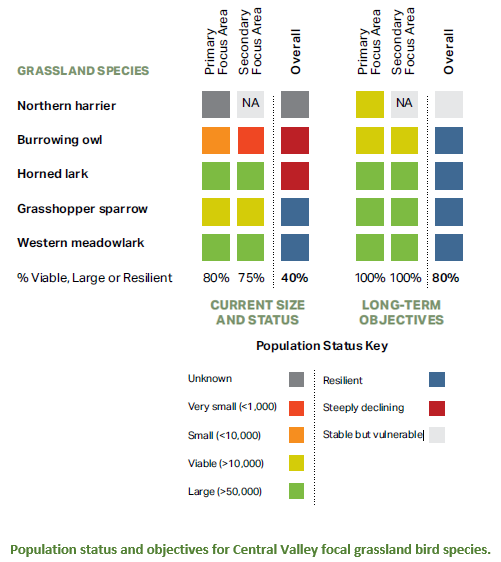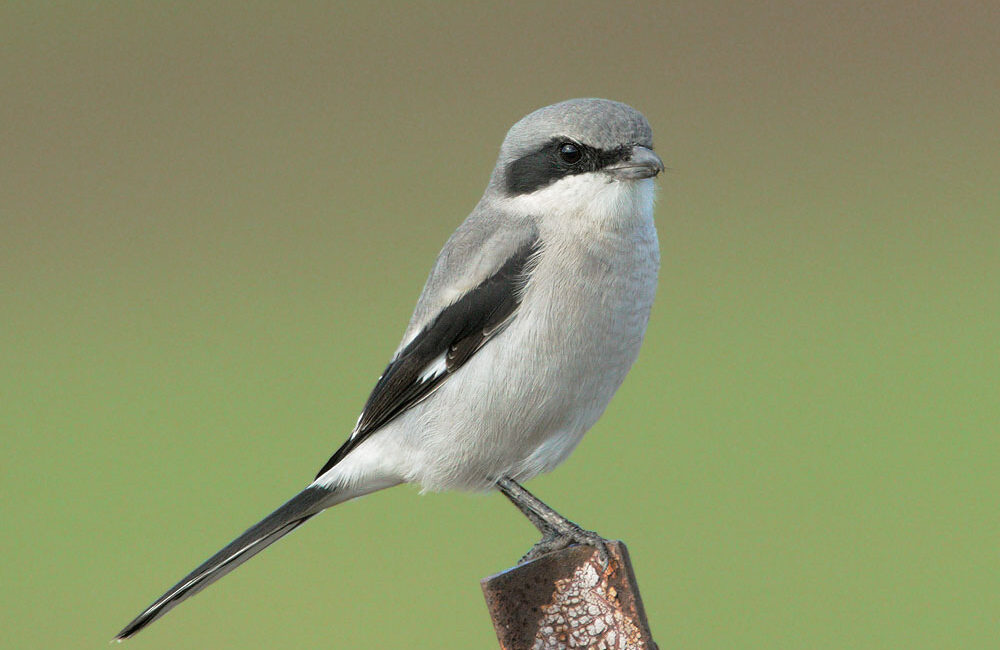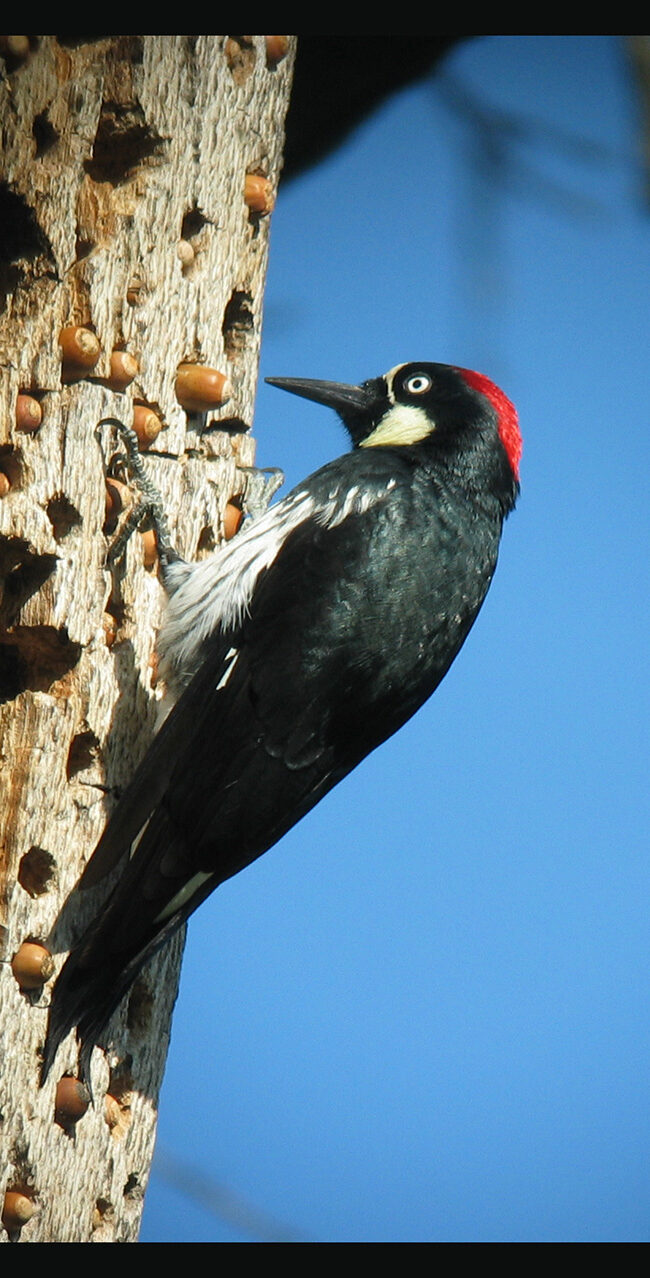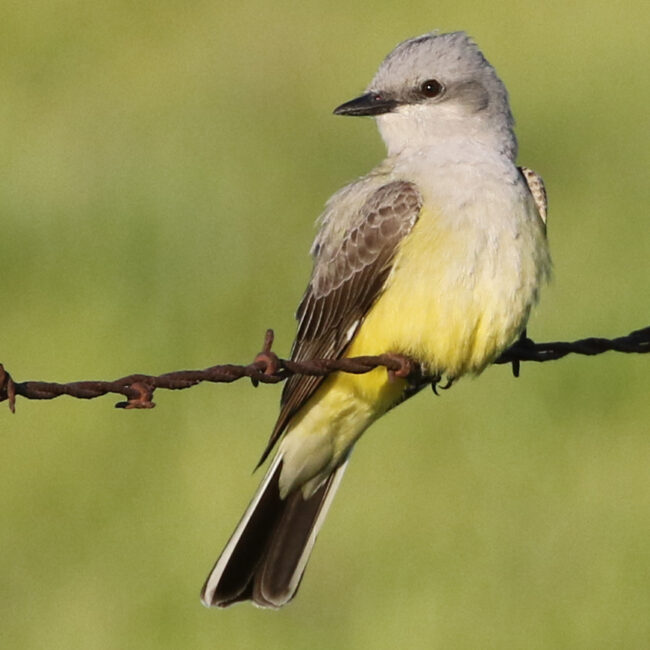Grassland and Oak Savannah habitats
Grassland and oak savannah habitats are important upland components of the region, particularly the open country low elevation foothills and rangelands that surround the Valley floor. The habitats are often adjacent to each other, transitioning from one to the other, differing mainly in the percentage of tree canopy cover.
Primary and Secondary Focus Areas:
Grassland Habitat
Central Valley Grasslands are vast landscapes dominated by grasses and other herbaceous plant species with less than 10 percent tree canopy cover.
The CVJV currently contains an estimated 4 million acres of grassland habitat, more than half in the Primary Focus Area on the valley floor. Privately owned pastures and ranchlands are a huge component of our grasslands.
Our short-term (10-year) habitat objective for grassland is an additional 10,300 acres of protected, high-quality grassland.
The CVJV chose five focal bird species associated with our grasslands, two of which have declining populations. Our aim is to reach more than 50,000 individuals of most of those species. But for those species with very small or unknow population sizes, we'll aim for 10,000 individuals.

CVJV Implementation Plan (2020)

CVJV Implementation Plan (2020)
Primary and Secondary Focus Areas:
Oak Savannahs
Oak savannahs are woodlands with sparse (10%-40%) canopy cover, with oaks (Quercus spp.) as the dominant tree species, including valley oak woodland, coast oak woodland, blue oak-foothill pine, and blue oak woodland. The understory is dominated by grass and herbaceous species.
The CVJV currently contains an estimated 1.8 million acres of oak savannah habitat, with 94% in our Secondary Focus Area. The CVJV set the 10-year oak savannah habitat objective at an additional 8,500 acres of protected, high-quality habitat.
The CVJV chose seven focal bird species associated with oak savannah habitat, four of which have declining populations. Our aim is to reach more than 50,000 individuals of most of those species. But for those species with very small or unknow population sizes, we'll aim for 10,000 individuals.






